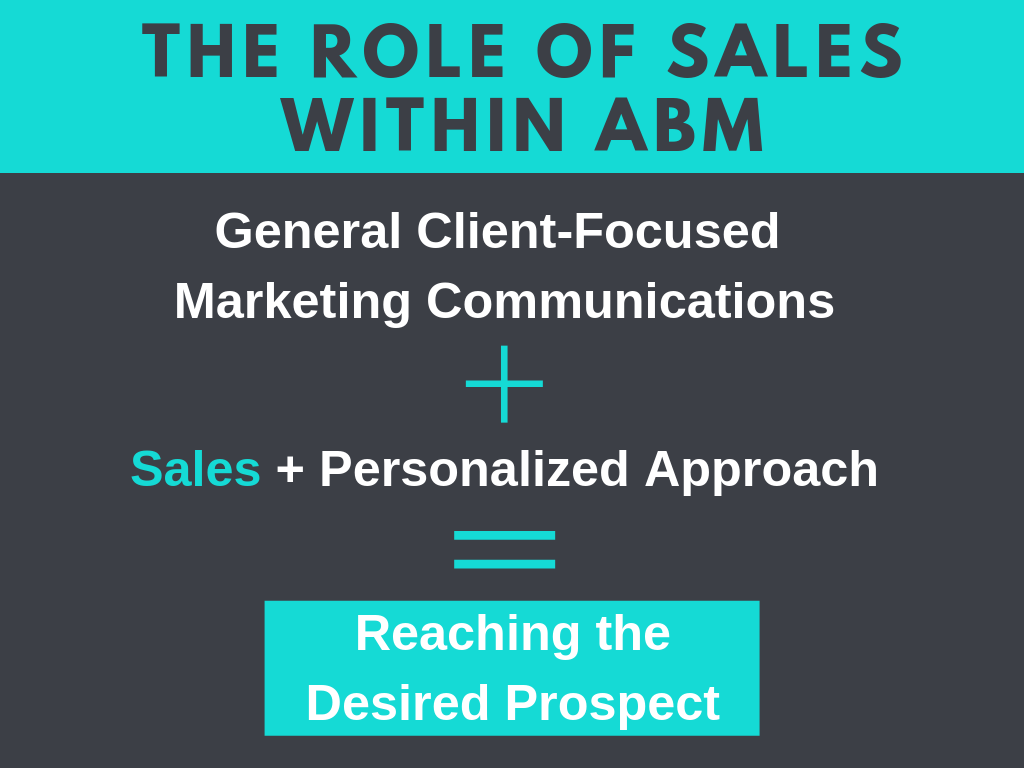The Role of Sales within Account-Based Marketing Strategies
For as long as enterprise software has been around, the default go-to-market (GTM) strategy was to create as much noise as possible to garner attention around your product and go after hand-raisers and high-fit prospects with a sales team. This is what some refer to as the volume lead-based model.
Though this model is not entirely obsolete, it’s proving to no longer be as effective as it once was. This is partly due to the fact that it causes many inefficiencies throughout the sales process but more likely due to the fact that, regardless of the field, most markets software organizations target are becoming overcrowded with vendors. This oversaturation is leading to a lot of noise within people’s inboxes and making it much harder to stand out to actually capture someone’s attention.

What many have proposed as a solution to this problem is an idea called Account Based Marketing or ABM for short. If you’re already working in sales or marketing for a tech organization it’s likely an acronym you’ve already heard many times before. However, it seems to have many different meanings to different people, which begs the question, what exactly is ABM?
ABM takes the traditional lead-based model and flips it on its head. Rather than targeting as many people as possible and having a sales team try and find the needle in a large haystack, this process starts first by identifying high-value clients the company would like to have a very specific focus on. Once this target list has been identified, highly personalized and tailored strategies are then put in place with messaging that will hopefully prove to be too enticing and relevant to ignore.
It is a means of finding greater success with outbound marketing & sales campaigns through more effective collaboration. There are benefits to be gained from simply improving communication among the various departments, tips for which we’ve written about before, but when that isn’t enough leaders need to consider systematic changes to their GTM strategy that can provide greater efficiencies which in turn will hopefully lead to greater revenue.
To some, this may mean simply adding digital advertising campaigns to focus on companies that the sales team is planning to go after. The additional air coverage will very likely have some impact in improving engagement results but ultimately that would only be a piece of the puzzle.
ABM in its entirety should really be a cohesive effort to have a 1:1 conversation with an organization on why and how your solution can provide value the prospect currently doesn’t have at their disposal today. There should be the same unified message being delivered across every channel used to reach these leads/prospects and this message should evolve as the sales cycle continues to develop.
For example, if we were an ABM platform vendor the first course of action would be to raise awareness on the value of ABM in general to develop an internal need. In a true ABM strategy, there would ideally be material related to each prospect’s situation or environment to more easily help them more concretely envision what benefits they can achieve by adopting a new solution as opposed to proposing hypothetical scenarios.
Once the need has been developed, the next course of action should be to differentiate your solution from other vendors in the market. The messages being delivered here could touch on how your solution works better with the technology investments a company already has in place or superior capabilities you have over your competition. Relevant case studies and customer testimonials would also be gold at this stage in the process.
As these conversations develop the onus to develop these responsibilities will fall less on marketing and more on sales to receive the baton the bring it across the finish line. From a high-level perspective, there should be a gradient pattern of share in responsibility where early engagements have the ball in marketing’s court and later phases of the engagement would be on the sales side.
Now as a sales professional, marketing will essentially view you as another arm or channel they can use to reach target accounts. Typically though this would be reserved for those accounts that are showing some level of interest.
From a day to day perspective, your responsibilities won’t change in terms of how you’re carrying out your job. A switch to an ABM strategy will more than likely simply mean a switch in focus for what companies you go after and why. You’ll still need to go through the motions of qualifying your opportunities and facilitating the conversations with a personal touch to bring to close.
In summary, the true role of a sales professional within ABM should be to provide a human touch or element through rapport and empathy that’s often hard for marketing teams to achieve through their typical channels. If you’re interested in learning more please comment below and let us know what you’d like to learn more about.
If you’re looking for other sales advice you’re also welcome to check out our other articles on the Rainmakers blog. Of course, if you’re looking to break into or find a new opportunity within tech sales you can also find listings for your future job on our website at https://www.rainmakers.co/










